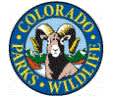Colorado’s Turkey Talk
OutdoorHub 11.19.12

There are a lot of people talking turkey this time of year. Roasted or deep-fried? White meat or dark? Do you want stuffing with that?
But ask a Colorado bird hunter about turkeys, and you are more likely to hear them debate the Rio Grande versus Merriam’s turkey. East Slope versus West Slope? Spring season or fall?
Once nearly wiped out in Colorado, there are more wild turkeys in the state now than ever before. According to biologists at Colorado Parks and Wildlife, that makes it easier to find places to see America’s largest game bird.
“The increase of wild turkeys in Colorado is due to their adaptability, high reproductive capability and careful management of hunting,” said Brian Dreher, a senior terrestrial biologist for CPW.
Dreher said that Colorado wildlife managers began developing strategies to increase the wild turkey population in the early 1980s. Over the ensuing years, the agency successfully transplanted wild turkeys into most of the available habitat in the state.
Turkeys were plentiful in the North America at the time the Pilgrims landed, but as the colonists spread west, turkey populations plummeted to around 30,000 birds by 1900.
According to Dreher, wild turkeys faced a double whammy in the early years of our country. “There were no regulations to prevent over-hunting, and forests in the eastern U.S. were cut down for farmland and firewood. Without trees and suitable habitat, the birds became scarce.”
Today, wild turkeys are once again abundant across the nation due to modern turkey-management programs by state wildlife agencies and conservation groups such as the National Wild Turkey Federation.
Wild turkeys are cunning, wary birds. They have excellent eyesight and can run at speeds up to 25 mph to escape predators. Some people think turkeys are too big to fly. That may be true of domestic birds, but wild turkeys and are capable of flying for short distances at speeds up to 50 mph. These characteristics make wild turkeys a challenging quarry for hunters.
“In 2013, there will be additional hunting opportunities in GMU 30 just north of Grand Junction,” said Brad Petch, a senior terrestrial biologist for the Northwest Region. “There will still be a youth-only hunt, but we’ve added additional hunting licenses available to adult hunters.”
Colorado is home to two subspecies of wild turkey: the native Merriam’s and the Rio Grande, which was introduced to the state in 1980.
The Merriam’s wild turkey lives primarily in open meadows and in ponderosa, oak brush and pinion juniper stands in mountainous zones west of Interstate 25. The Rio Grande species inhabit cottonwood and riparian areas adjacent to agricultural lands in the eastern portion of the state.
Wild turkeys mate in the early spring. Courtship usually begins while turkeys are still flocked together in wintering areas. Males attract females through a variety of calls, struts and displays including fanning their tail feathers.
After mating, the hens begin searching for a nest site to lay eggs. Wild turkeys build nests in shallow dirt depressions surrounded by moderately woody vegetation to conceal it.
Hens lay a clutch of 10 to 12 eggs during a two-week period, usually laying one egg per day. She will incubate her eggs for about 28 days, occasionally turning and rearranging them until they are ready to hatch.
A newly-hatched flock must be ready to leave the nest within 12 to 24 hours to feed. Young turkeys, known as poults, eat insects, berries and seeds, while adults will eat anything from acorns and berries to insects and small reptiles. Turkeys usually feed in early morning and in the afternoon.

